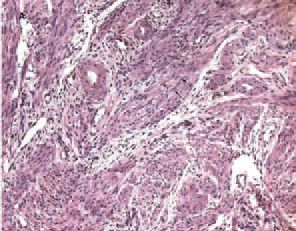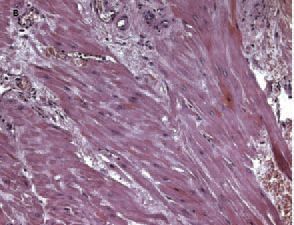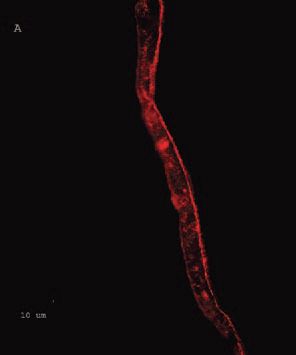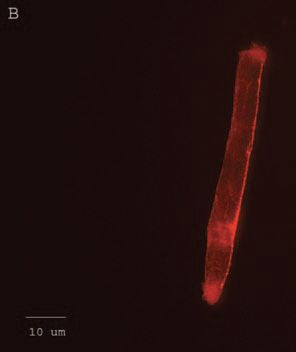
Physiology News Magazine
The large conductance calcium-activated potassium channel (BKCa) and the β2 adrenergic receptor (AR): a direct link to uterine relaxation
The similar pattern of expression between the β2 adrenoceptor and BKCa channel during pregnancy suggests that the link between these two proteins may constitute a new piece in the jigsaw
Features
The large conductance calcium-activated potassium channel (BKCa) and the β2 adrenergic receptor (AR): a direct link to uterine relaxation
The similar pattern of expression between the β2 adrenoceptor and BKCa channel during pregnancy suggests that the link between these two proteins may constitute a new piece in the jigsaw
Features
Boonsri Chanrachakul, Fiona Broughton Pipkin, & Raheela N Khan
Academic Division of Obstetrics and Gynaecology, School of Human Development, University of Nottingham, Nottingham, UK
https://doi.org/10.36866/pn.55.22

Preterm birth, which is the delivery of an infant before 37 completed weeks of gestation, is a leading cause of perinatal mortality and morbidity. It accounts for 6-11% of births and the number is twice as much in developing countries. It is noteworthy that the incidence of preterm delivery has risen in the USA from 9.4% in 1981 to almost 12 % in 2000. This is despite considerable research efforts into the prevention and management of preterm labour. Predictive methods such as ambulatory monitoring and assessment of risk factors have not proved to be reliable indicators in identifying patients at risk.
Preterm birth and its attendant sequelae impose a major burden on health and educational resources, in addition to the emotional and personal costs to families and individuals affected by prematurity. The NHS reportedly spends nearly £40K on each baby weighing < 1000 g (Petrou, 2003). Over £70 million is spent by the NHS each year for neonatal intensive care, even excluding associated health care costs for neurological or respiratory problems. Indirect costs are incalculable arising as a result of, for example, loss of employment to care for a preterm baby.
During the past three decades, the advent of sophisticated medical technologies in neonatal paediatrics has greatly improved the survival rate of premature babies. Indeed, this has pushed prematurity to the extremes of viability and presents its own paradox: survival but at what cost? Babies born at extreme preterm gestations have a good chance of survival but with questionable quality of life. To date, there is no sign of a breakthrough in the prevention or treatment of preterm labour. This may be attributed to our limited knowledge of the complex mechanisms that determine uterine excitability, the quiescence during pregnancy and its physiological removal at term.
The change in size and contractile behaviour of the human uterus with pregnancy is dramatic. Myometrial cells of the gravid uterus are 5-10 times larger compared with their non-pregnant equivalents, due to cellular hypertrophy during pregnancy. This is observed as an increase in size of the nuclei and the amount of cytoplasm in individual cells (Fig. 1A and 1B). Moreover, the uterus is transformed from a state of relative quiescence during most of gestation to one of powerful rhythmic contractility at parturition determined by an upregulation of contraction-associated proteins (CAPs) such as gap junctions and oxytocin receptors.


The β2 adrenergic receptor (β2 AR), a member of the superfamily of G protein-coupled receptors, is abundant in smooth muscle organs. Activation of the β2 AR results in uterine smooth muscle relaxation. Currently, drugs which act at the β2 AR, β2 agonists (ritodrine, terbutaline) are widely used as a main treatment option for preterm labour. However, they are associated with adverse maternal cardiovascular and metabolic effects due to the ubiquitous distribution of this receptor in many other target organs. Further, the efficacy of β2 AR agonists is compounded by the development of tachyphylaxis after continued exposure to these agents both in vivo and in vitro. Considering this, there is a paucity of information regarding the molecular basis of β2 AR function in uterine smooth muscles of pregnant women before and after the onset of labour.


We recently reported the plasmalemmal location of β2 ARs in pregnant human myometrial cells (Fig. 2A), levels of which are down-regulated in pregnant women with labour compared with those not in labour (Chanrachakul et al. 2003b). However, it remains unclear whether this transition precedes the onset of labour or whether it occurs as a consequence of it.
An increasing body of evidence supports the notion that ion channels may be the terminal effectors in signalling cascades and as such are probably linked to a diversity of specific signalling pathways.
Calcium-activated potassium channels are richly expressed in smooth muscle organs including the human myometrium. Of the three subclasses of calcium-activated potassium channels, the large conductance calcium-activated potassium (BKCa) channel predominates in human myometrium and is involved in mediating uterine relaxation (Khan et al. 1993). The BKCa channel comprises a pore-forming α subunit and a regulatory β subunit.
Previous data regarding the expression of BKCa channel mRNA and protein in mouse and rat myometrium showed conflicting results. We demonstrate that, as for β2 AR, BKCa channels are predominantly localized to the myometrial cell membrane (Fig. 2B) and that levels of both the α and β subunit of the BKCa channel decline in parallel in myometrial tissues obtained following the onset of labour of both term and preterm pregnancy (Chanrachakul et al. 2003a; Matharoo-Ball et al. 2003).

Uterine contractions result from an elevation of intracellular Ca2+ which in turn activate BKCa channels leading to uterine relaxation, but cellular control of this pathway is not fully understood. A prominent feature of β2 AR stimulation is their linkage to the activation of BKCa channels (Kume et al. 1989). In the human uterus, β2-agonists activate BKCa channels causing cellular hyperpolarization via G protein-dependent pathways. However, the molecular basis of the interaction between these two proteins in mediating uterine relaxation and the onset of labour in humans is not known. Interestingly, our recent data suggests that there is an apparent colocalization and a direct protein-protein interaction between the β2 AR and BKCa channels in the term, pregnant human myometrium (Chanrachakul et al. 2003c).
We consider it to be of significant importance to examine the correlation between β2 AR and BKCa channel in much greater detail. Our ongoing studies are focussing on the molecular and functional association between these two entities in human myometrium and their contributions to myometrial relaxation signalling cascades.
Hopefully, these findings will lead to the development of novel therapeutic strategies that target the β2 AR/BKCa pathway for the treatment of preterm labour to reduce the incidence of prematurity.
Acknowledgement
Boonsri Chanrachakul is supported by the Faculty of Medicine, Ramathibodi Hospital, Mahidol University, Thailand.
References
Chanrachakul B, Matharoo-Ball B, Turner A, Robinson G, Broughton-Pipkin F, Arulkumaran S & Khan RN(2003a). Immunolocalization and protein expression of the alpha subunit of the large-conductance calcium-activated potassium channel in human myometrium. Reproduction 126, 43-48.
Chanrachakul B, Matharoo-Ball B, Turner A, Robinson G, Broughton-Pipkin F, Arulkumaran S & Khan RN (2003b). Reduced expression of immunoreactive beta(2)-adrenergic receptor protein in human myometrium with labor. J Clin Endocrinol Metab 88, 4997-5001.
Chanrachakul B, Turner A, Matharoo-Ball B, Broughton Pipkin F, Arulkumaran S, Khan R N. (2003c). Colocalization and expression of β2-adrenergic receptor and large conductance calcium-activated potassium channel in human myometrium. Proc Phys Soc 551P, C8.
Khan RN, Smith SK, Morrison JJ & Ashford ML (1993). Properties of large conductance potassium channels in human myometrium during pregnancy and labour. Proc R Soc Lond B Biol Sci 251, 9-15.
Kume H, Takagi K, Tokuno H & Tomita T (1989). Regulation of Ca-dependent K-channel activity in tracheal myocytes by phosphorylation. Nature 341, 152-154.
Matharoo-Ball B, Ashford ML, Arulkumaran S & Khan RN (2003). Down-regulation of the alpha- and beta-subunits of the calcium-activated potassium channel in human myometrium with parturition. Biol Reprod 68, 2135-2141.
Petrou S (2003). Economic consequences of preterm birth and low birthweight. Bjog 110, Suppl 20, 17-23.
